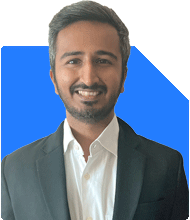i have to invest 20 lacs in mutual fund lump sum. please suggest.
Ans: Investing Rs. 20 lakhs in mutual funds is a significant decision. It requires careful planning and consideration to ensure that your money works effectively for you. Let’s explore the various aspects of this investment, providing a comprehensive, 360-degree view to help you make an informed decision.
Understanding Your Investment Goal
First, let’s understand your financial goals. Are you investing for retirement, a child’s education, buying a house, or simply wealth creation? Knowing your goal helps in choosing the right type of mutual funds.
Importance of Lump Sum Investment
Lump sum investments can be very effective if timed correctly. However, market volatility can impact returns. Diversification and professional management in mutual funds can help mitigate these risks.
Why Mutual Funds?
Mutual funds are a popular investment choice because they offer diversification, professional management, and liquidity. They cater to different risk appetites and investment horizons, making them suitable for a variety of financial goals.
Active vs. Passive Funds
When choosing mutual funds, you might hear about index funds or ETFs. These are passive funds tracking market indices. They are cost-effective but might not be the best choice for maximizing returns.
Disadvantages of Index Funds
Index funds simply follow the market, whether it’s up or down. They lack flexibility and don’t adjust to market conditions. This can limit growth opportunities.
Benefits of Actively Managed Funds
Actively managed funds, on the other hand, have fund managers who make strategic decisions based on market conditions. This active management can potentially offer higher returns, making them a better option for lump sum investments.
Disadvantages of Direct Funds
Direct funds may seem attractive due to lower expense ratios. However, they require significant market knowledge and constant monitoring. Managing direct funds without professional guidance can be challenging.
Benefits of Regular Funds
Regular funds, invested through a Mutual Fund Distributor (MFD) with a Certified Financial Planner (CFP) credential, offer professional advice and ongoing support. This guidance ensures your investments are well-managed and aligned with your financial goals.
Types of Mutual Funds to Consider
Equity Funds
Equity funds invest in stocks and aim for high returns. They are suitable for long-term goals like retirement or wealth creation.
Balanced Funds
Also known as hybrid funds, these invest in both equities and debt. They provide a balanced approach, offering moderate returns with reduced risk. They are ideal for medium to long-term goals.
Debt Funds
Debt funds invest in fixed-income securities like bonds and treasury bills. They are less volatile than equity funds and provide stable returns. These are suitable if you have a lower risk tolerance.
Aggressive Hybrid Funds
These funds have a higher allocation to equities compared to balanced funds but still maintain a significant portion in debt. They offer potential for higher returns while cushioning against extreme market volatility.
Dynamic Bond Funds
These funds adjust their portfolio duration based on interest rate changes. They can take advantage of varying market conditions, making them a flexible option for medium to long-term investments.
Diversification and Asset Allocation
Diversification reduces risk by spreading investments across different assets. For your Rs. 20 lakh investment, a mix of equity and debt funds is ideal. Equities provide growth, while debt offers stability. Asset allocation based on your risk tolerance ensures your portfolio is not overly exposed to market fluctuations.
Systematic Transfer Plan (STP)
Instead of investing the entire Rs. 20 lakhs in one go, consider using a Systematic Transfer Plan (STP). STP allows you to invest in a liquid or debt fund initially and then systematically transfer fixed amounts into equity funds. This method helps in mitigating market volatility.
Role of Certified Financial Planners
Engaging a Certified Financial Planner ensures your investments align with your goals. They provide personalized advice, helping you choose the right funds and maintain the necessary discipline. They also help in monitoring your portfolio and making adjustments as needed.
Tax Efficiency
Mutual funds offer tax benefits that can enhance your returns. Equity funds held for over a year qualify for long-term capital gains tax at a lower rate. Debt funds held for over three years benefit from indexation, reducing the tax burden. Understanding these nuances helps in maximizing your returns.
Monitoring and Rebalancing
Regularly reviewing your portfolio is essential to ensure it stays on track. Market conditions and personal circumstances change, necessitating adjustments. Rebalancing involves realigning the portfolio to the desired asset allocation, ensuring it meets your goal within the stipulated time.
Handling Existing Investments
If you hold LIC, ULIP, or other investment cum insurance policies, consider their performance and costs. These products often have high charges and might not offer the best returns. Surrendering these policies and reinvesting the proceeds into mutual funds can be a better strategy.
Emergency Fund
Before investing the entire Rs. 20 lakhs, ensure you have an emergency fund. This fund should cover 3-6 months of expenses, providing a safety net for unforeseen circumstances. It ensures you don’t have to dip into your investment for emergencies.
Understanding Risk Tolerance
Every investor has a different risk tolerance. Assessing yours is crucial to choose the right mix of mutual funds. Discussing your comfort level with a Certified Financial Planner helps in aligning your investments with your risk appetite.
Financial Discipline
Staying disciplined in your investment approach is crucial. Avoid unnecessary withdrawals and stick to your plan. Financial discipline is the foundation of successful investment planning.
Reviewing Insurance Needs
Adequate insurance coverage is essential. Ensure you have sufficient health and life insurance before focusing on investments. This protects your savings and ensures your financial plan remains intact in case of unforeseen events.
Setting Realistic Expectations
While mutual funds can offer good returns, it’s essential to have realistic expectations. Understand that investments are subject to market risks, and returns can fluctuate. Having a clear understanding helps in staying committed to your investment plan.
Leveraging Professional Advice
Certified Financial Planners offer comprehensive advice tailored to your goals. They assist in selecting suitable mutual funds, planning investments, and making informed decisions. Their expertise helps in navigating the complexities of financial planning.
Building a Contingency Plan
While planning your investment, it’s wise to have a contingency plan. Life is unpredictable, and having a backup ensures your primary goal isn’t compromised. This might include an additional savings account or a short-term investment fund.
Advantages of Regular Funds
Regular funds provide continuous support from financial advisors. They help in managing investments, understanding market trends, and making informed choices. This guidance is invaluable, especially for significant investments like Rs. 20 lakhs.
Avoiding Common Pitfalls
Avoid common mistakes like emotional investing, lack of diversification, or ignoring professional advice. Staying informed and disciplined is key to successful investment planning. Engage with your Certified Financial Planner regularly to stay on track.
Evaluating Fund Performance
Assessing the performance of mutual funds is vital. Look beyond past returns and consider factors like fund manager expertise, fund house reputation, and investment strategy. A thorough evaluation ensures you choose funds that align with your financial goals.
The Power of Compounding
Compounding plays a significant role in wealth accumulation. The earlier you start, the more you benefit from the power of compounding. Investing Rs. 20 lakhs wisely in mutual funds can significantly grow your corpus over time.
Building Your Investment Portfolio Step-by-Step
Assess Current Financial Situation
Evaluate your income, expenses, and existing investments. Determine how much you can comfortably invest as a lump sum.
Set Clear Goals
Define your investment goals and timeline. Understand your risk tolerance and liquidity needs.
Choose Suitable Mutual Funds
Select a mix of equity and debt funds based on your risk tolerance and investment horizon. Consult a Certified Financial Planner for personalized advice.
Consider Systematic Transfer Plan (STP)
Use STP to mitigate market volatility by transferring funds systematically from a debt fund to equity funds.
Monitor and Rebalance
Regularly review your portfolio and make necessary adjustments. Rebalancing ensures your investments remain aligned with your goals.
Stay Disciplined
Stick to your investment plan and avoid unnecessary withdrawals. Financial discipline is key to achieving your financial goals.
Final Insights
Investing Rs. 20 lakhs in mutual funds is a significant step towards financial growth. Mutual funds offer diversification, professional management, and potential for high returns. Focus on a mix of equity and debt funds to balance risk and reward.
Engage with a Certified Financial Planner for personalized advice and ongoing support. They help in selecting suitable funds, planning investments, and staying disciplined. Regularly review and rebalance your portfolio to ensure it remains aligned with your goals.
Avoid common pitfalls, stay informed, and maintain financial discipline. With the right approach, you can achieve your financial goals and secure your future.
Best Regards,
K. Ramalingam, MBA, CFP,
Chief Financial Planner,
www.holisticinvestment.in

























